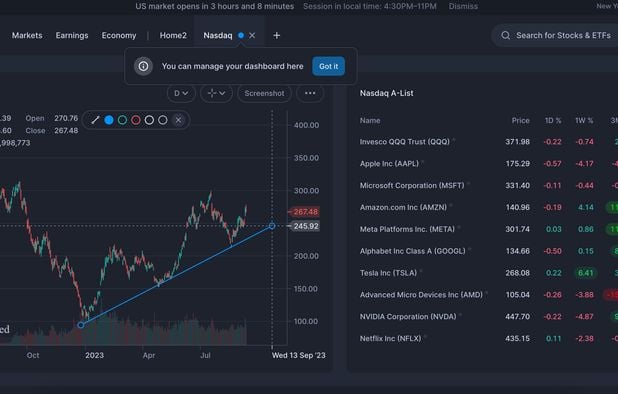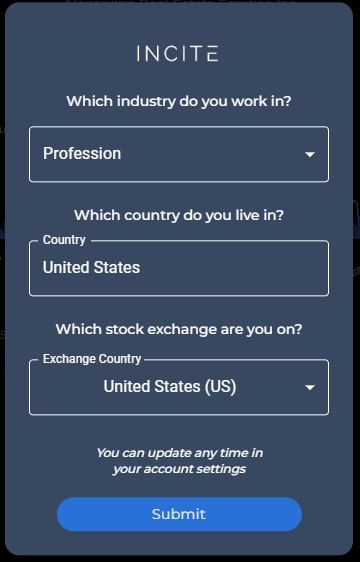Customer support is critical when selecting an AI trading platform that can predict or analyze stocks. Reliable, responsive support will have a significant impact on resolving any issues, maximizing the use of the platform, and making sure that trading runs smooth. Here are 10 tips to evaluate the customer service of these platforms.
1. Evaluation of Support Availability
24/7 support: Check if the platform offers round-the-clock support, especially important for international market and real-time trade.
Hours of operation If there isn't 24/7 support available You should make sure that support is in place during your business hours.
Find out if support is available on weekends, holidays or during market closures.
2. Test Response Times
Initial response. Contact customer support and ask them a sample question to see how quickly they will respond.
Time to solve: Do not simply admit the issue however, you must also establish the time it will take you to resolve it.
Live chat is available, make sure to test the response speed and the effectiveness.
3. Examine Support Channels
Multichannel Support: The platform should offer support via various channels (e.g. live chat, email, phone).
You can check your preferred channel to determine if it's reliable and available.
Self-service options: Look for a complete knowledge base, FAQs, or community forums to speed up problem-solving.
4. Evaluation of Quality of Support
Expertise - Make sure that the support personnel you employ are proficient in trading, platform issues, and technical problems.
Problem-solving: Determine if agents of support can efficiently resolve complicated problems or escalate them in a timely manner.
Professionalism - Check to see if interactions with support are pleasant, helpful, and professional.
5. Check for Dedicated Client Managers
Premium support: Make sure to determine if customers of higher-tier plans, or who are institutional customers, have access a dedicated account manager.
See whether the account manager can provide specific support, proactive guidance or prompt assistance.
Relationship building: Ensure that account managers are available and establish long-term relationships.
6. Review the Support Documentation
Knowledge base: Check that the platform includes a searchable, well-organized, and comprehensive knowledge base, including tutorials and guides.
Video tutorials - See whether your platform provides videos, webinars or video tutorials suitable for visual learners.
API documentation. If you're an expert in programming, make sure the platform you are using has detailed and clear API documentation.
7. Assess community and peer support
Forums for users. Make sure your platform hosts a forum or user community where you can find useful tips and tips and.
Look for social media groups that aren't official (e.g. Reddit or Facebook). These groups allow users to speak about the platform.
Community engagement: Find out whether team members are active participants in forums or discussions in the community.
8. Evaluate Escalation Processes
Issue escalation: Make sure there's a clear process for escalating issues that are not resolved to support at a higher level or management.
Follow-up: Ensure that support has followed up with regard to a issue once it was resolved to make sure the issue was fully resolved.
Feedback loop: Check whether feedback is gathered from customers to improve support services.
9. Test Support for Critical Situations
Market volatility: Assess the responsiveness of support personnel during periods of high market volatility.
Issues with technical aspects: You are able to simulate a technical problem (e.g. login problems, data discrepancies) to see the support team's response.
Trade execution: Find out whether you can receive support for urgent issues related to trade (e.g. unsuccessful orders delay in execution).
10. Review Feedback from Users on Support
Reviews on the internet: Make use of platforms such as copyright G2 or Reddit to read user reviews and determine the overall satisfaction.
You can find testimonials about positive experiences by searching testimonials or case studies.
Check the platform to see the way it handles complaints, negative feedback and support.
Bonus Tips
Support is available during the trial or demo.
Language support: See whether you are able to get help in your language of choice if you don't speak English.
Training and Onboarding - Look to see if your platform has onboarding or training sessions to help users get started.
These suggestions will assist you to evaluate the customer service of AI trading platforms that predict stocks or analyze trades. In this way, you'll be able to choose a platform with reliable prompt and friendly assistance. A good customer service can enhance your overall experience with the platform and enable you to get the most benefit from its features. View the best he has a good point about ai investment platform for blog recommendations including chart ai trading assistant, trading ai, stock ai, investing ai, ai for stock predictions, market ai, options ai, best ai trading software, investment ai, ai investing platform and more.

Top 10 Tips To Evaluate The Updates And Maintenance Of Ai Stock Predicting/Analyzing Platforms
Examining the maintenance and updates of AI-powered platforms for trading and stock prediction is essential to ensure they're secure, effective and in line with changing market conditions. These are the top ten suggestions for evaluating update and maintenance methods:
1. Updates are posted regularly
TIP: Find out how often the platform releases updates (e.g., weekly or monthly, or quarterly).
Updates on a regular basis show active improvement of the product and the ability to adapt to market changes.
2. Transparency is key in the Release Notes
Review the platform release notes to see the improvements or changes taking place.
Why? Transparent release notes reflect the platform's commitment to continuous improvement.
3. AI Model Retraining Schedule
Tips: Find out how often the AI models are trained with fresh data.
What is the reason? Markets fluctuate and models must be updated to ensure their the accuracy.
4. Bug Corrections and Issue Resolution
TIP: Evaluate the speed at which the platform responds to technical issues or bugs that users have reported.
The reason: Quick bug fixes ensure the platform remains reliable and functional.
5. Updates on Security
Tip: Check if the platform has updated its security protocols regularly to ensure the security of data of users and trading activities.
The reason: Cybersecurity is essential in financial platforms to stop attacks and fraud.
6. Incorporating New Features
Tips: Check the latest features that are being introduced by the platform (e.g. advanced analytics, data sources, etc.) in reaction to feedback from users or market trends.
Why: Features updates demonstrate innovation, responsiveness to the needs of users and creativity.
7. Backward compatibility
Tip: Check that updating doesn't cause major disruption to existing functionality or require a significant change in configuration.
Why? Backward compatibility is important to ensure a smooth user interface during transitions.
8. Communication with users during maintenance
Find out how your platform informs users of scheduled maintenance and downtime.
What is the reason? Clear communication prevents disruptions and builds trust.
9. Performance Monitoring & Optimization
Tip: Make sure the platform monitors and optimizes the performance of your system (e.g. latency, accuracy).
Why: Ongoing platform optimization ensures that it is efficient and scaleable.
10. Conformity to Regulatory Changes
Tips: Check if the platform is updating its features and policies to ensure that they are in line with the new financial regulations or data privacy laws.
The reason: Compliance with regulations is vital to minimize legal risks and preserve confidence in the user.
Bonus Tip: User Feedback Integration
Check to see whether the platform integrates feedback from its users in its update and maintenance processes. This is a sign of a commitment to the user and a steadfast determination to make improvements.
You can look at these elements to ensure you're selecting a system for AI stock forecasts and trading which is up-to date, well-maintained and able to adapt to the changing dynamics of the market. Take a look at the most popular can ai predict stock market blog for blog advice including free ai stock picker, best ai stocks, ai trading tool, best ai stock prediction, best ai penny stocks, ai options, ai stock predictions, ai stock prediction, ai stock predictions, stock predictor and more.
